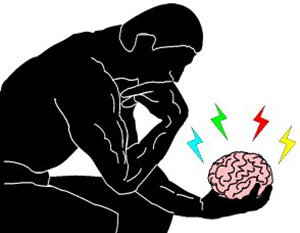By Dr. Rod Lucero and Shelly Morrell
In Wilson and Conyers’ “Five Big Ideas for Effective Teaching: Connecting Mind, Brain, and Education Research to Classroom Practice, the fifth of the five big ideas they describe is metacognition as a path to becoming functionally smarter.
Metacognition refers to thinking about one’s own thinking or being mindful of one’s thinking processes. Research studies have shown that metacognition is one of the most effective ways to improve students’ academic performance and to help students achieve their academic potential (Wilson and Conyers 110).
Examples of Metacognitive Activities Include
- Deciphering the meaning of an unfamiliar word by deconstructing it into identifiable parts
- Using pneumonics to recall specific facts
- Organizing topics or ideas through use of an outline
- Verbalizing the steps involved in solving a problem
- Rereading writing to edit and make spelling and word-use corrections
- Thinking beyond the given, making inferences, making connections or drawing conclusions from known information
- Identifying key points and summarizing main ideas
Metacognitive strategies support the process of learning and can be applied across content areas and even outside of school. Metacognition can be thought of as, “Working smarter, not working harder.” Metacognitive strategies encourage self-reflection, asking learners to think about what worked and what didn’t work for them as they learned new material. Teachers who teach and model these strategies are enabling their students to be more efficient, independent, and self-directed learners. “Students come to understand that they are in charge of their own learning and thus are responsible for taking the steps needed to complete learning tasks” (121). This type of empowerment in the learning process can effectively foster initiative and motivation.
The Take-Home Message
Encouraging students to become aware of their own learning can lead to students having a greater understanding of who they are as learners and how they most effectively learn. Ask your students to consider, for example, “Are you a learner who needs complete silence when studying or does non-vocal music help to keep you motivated? Does underlining important facts in a section of text make ideas more memorable or are written notes a better way for you to comprehend information?” What works best for one learner may not be what works for another and, the sooner students discover what works for them, the easier their academic achievements will be obtained.
“If students are in the driver’s seat of their educational journey, then teachers are their driving instructors- riding alongside them, monitoring their individual progress, and teaching and modeling effective learning”(137).
Sources
Wilson, Donna and Conyers, Marcus. Five Big Ideas for Effective Teaching: Connecting Mind, Brain, and Education Research to Classroom Practice. New York: Teachers College Press, 2013. Print.
Contributors
Dr. Rod Lucero- MTI Coordinator for CHHS Shelly Morrell- MTI Graduate Assistant

